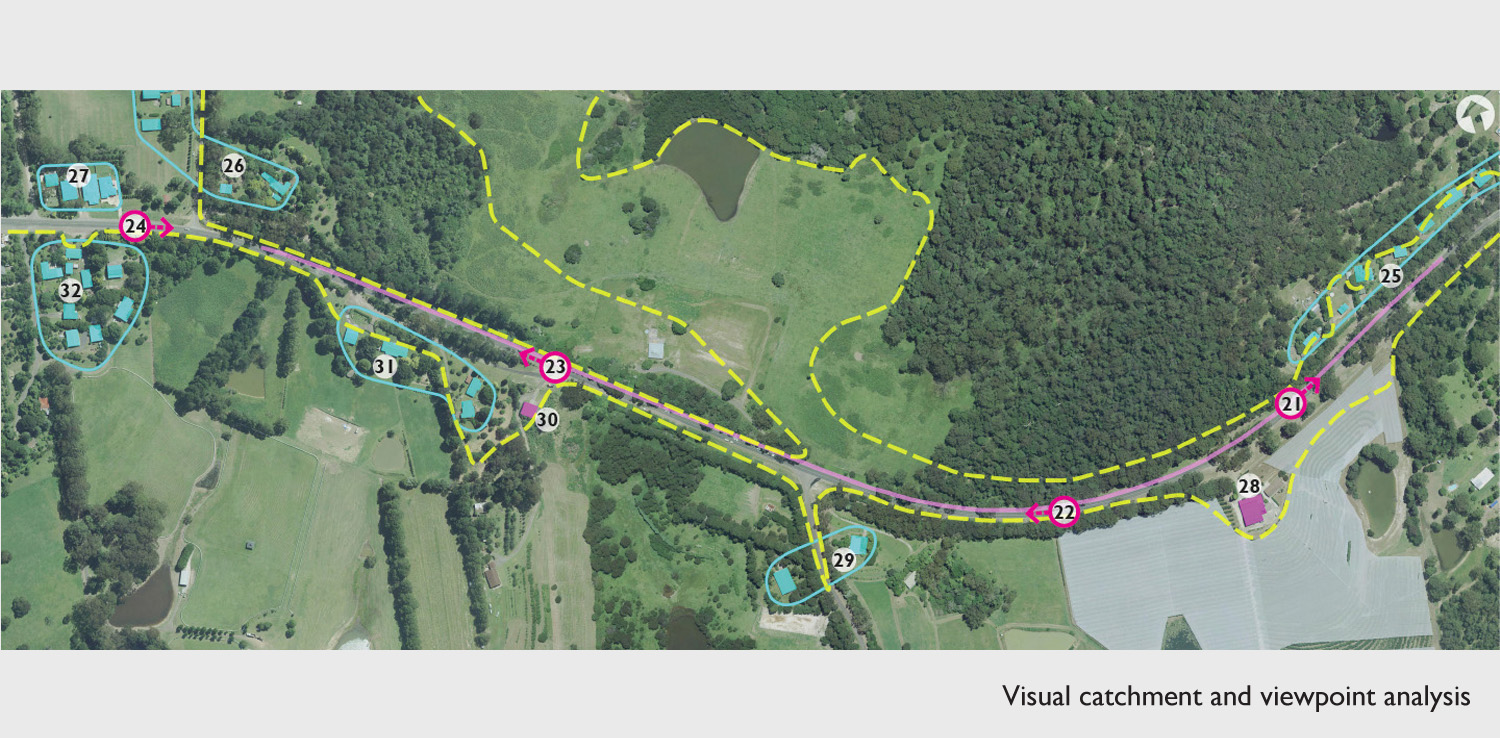





The Bells Line of Road runs between North Richmond on the north-western edge of metropolitan Sydney and the village of Bell in the Blue Mountains, forming a major link in the NSW road network. A four year safety improvement program is being carried out along the Bells Line of Road that includes building seven overtaking lanes and other works between Kurrajong Heights and Mount Tomah.
Corkery Consulting was engaged by Jacobs to prepare a Landscape Character and Visual Impact Assessment of the proposed safety improvement works. Mitigation measures were identified to reduce the potential impacts of the works on the landscape character and key view points.
We prepared detailed landscape documentation that included planting plans, plant schedules and seed mixes as well as a specification.
Client: Jacobs/Downer Mouchel/RMS
Location: Blue Mountains NSW Australia
Images: Corkery Consulting
PROJECT DESCRIPTION
The NSW Government is carrying out a four year safety improvement program for the Bells Line of Road between Kurrajong Heights and Mount Tomah. The works include construction of seven overtaking lanes and other safety improvements.
This section of Bells Line of Road is widely recognised as a major scenic route through the Blue Mountains. A feature of the landscape character of the road is the high proportion of scenic landscapes and the extent to which the road corridor is visually enclosed by native forest.
To address this challenge Corkery Consulting was engaged by Jacobs to prepare a Landscape Character
and Visual Impact Assessment of the proposed safety improvement works. A distinctive feature of the landscape character of the section of Bells Line of Road in the project area is the high proportion of natural landscape along the road corridor that is visually enclosed by native forest, which contrasts with sections of open pasture that provides extended views from the road.
The safety works at each site require the clearing of vegetation within five to ten metres of the existing travel lane edge and the removal of pavement surface and sub-surface components of the original road. Consequently mitigation measures were recommended to reduce the
potential visual impacts of the works on the landscape character. These measures focused on minimising the extent of vegetation clearing, integrating soil management techniques with the earthworks and revegetation of disturbed areas with indigenous species.
We also prepared detailed landscape documentation that included planting plans, plant schedules and seed mixes together with a specification. Advice was also provided on the design of a visually prominent section of retaining wall that involved colour and surface texture treatment to visually integrate the wall with the adjoining landscape.
